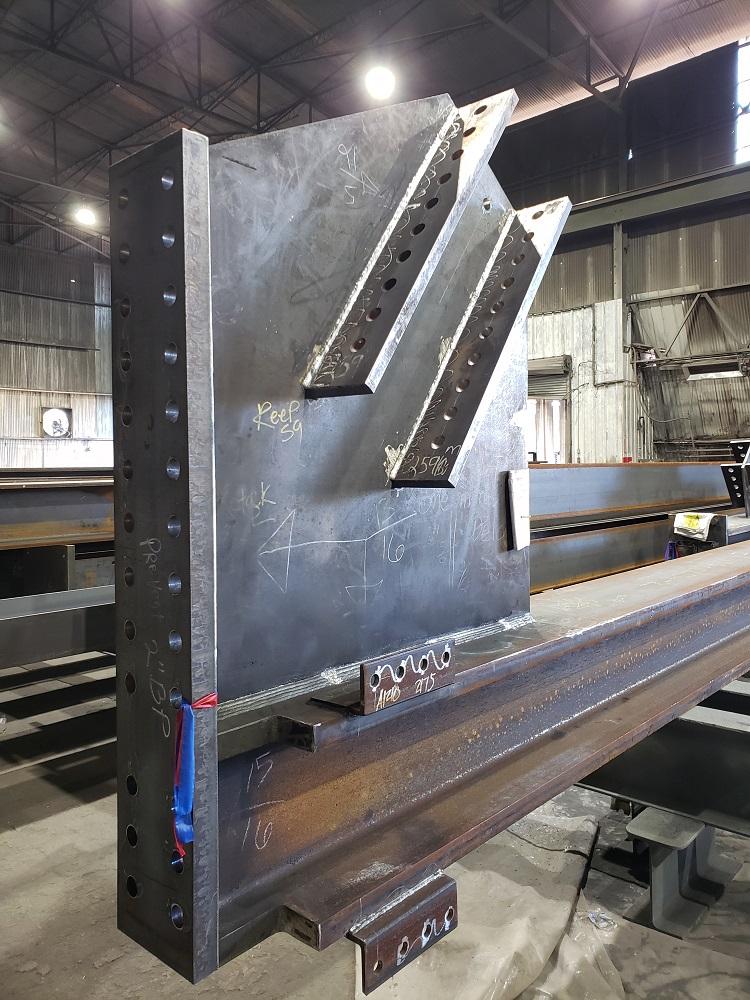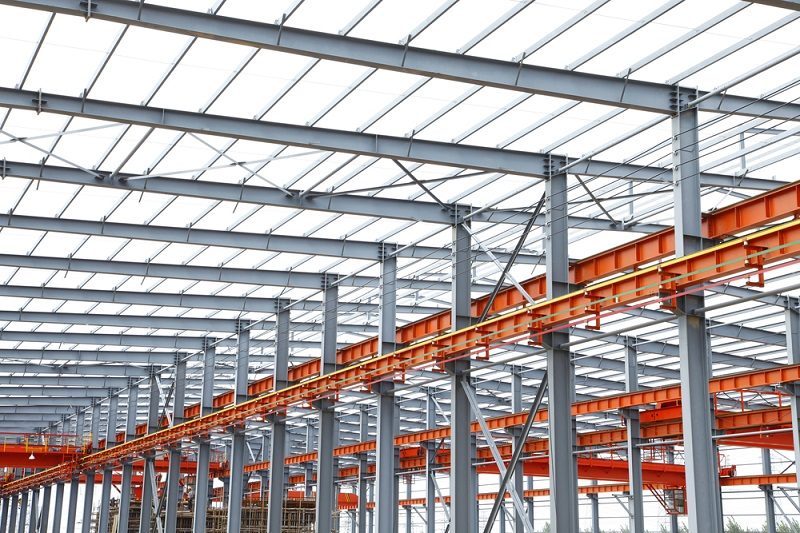The Ultimate Handbook on Personalized Steel Construction Solutions for Structural Projects
In the realm of architectural projects, the relevance of customized steel manufacture solutions can not be overemphasized. From the foundational understanding of steel construction essentials to the elaborate process of picking the most appropriate products, every step in this trip plays a pivotal function in the best success of a project. As we navigate with the complexities of layout considerations, construction procedures, and quality assurance steps, a thorough manual serves as an assisting light for specialists looking for excellence in steel manufacture solutions. Stay tuned to discover the understandings that can change the way structural jobs are come close to and implemented.
Comprehending Custom-made Steel Construction Fundamentals
Looking into the fundamentals of customized steel fabrication gives understanding right into the complex procedure of transforming raw steel into tailored structural elements. Custom steel fabrication is a specialized manufacturing strategy that entails cutting, shaping, and constructing steel products to produce distinct structures according to specific project requirements. Understanding the essentials of custom-made steel construction is important for guaranteeing the successful implementation of architectural projects.
The procedure commonly begins with the analysis of job specifications and design requirements. This initial phase entails comprehensive planning and partnership between designers, developers, and fabricators to identify one of the most appropriate approach for producing the steel components. Accuracy is key throughout the fabrication procedure, as even small discrepancies can influence the structural honesty of the end product.
Various methods, such as reducing, welding, and shaping, are employed to change raw steel into the preferred architectural elements. Knowledgeable producers make use of advanced equipment and devices to guarantee precision and uniformity throughout the fabrication procedure. Quality assurance measures are carried out to validate the integrity of the produced parts before they are put together on-site, making certain compliance with market criteria and task specifications.
Choosing the Right Steel Products

Primarily, the kind of structural project and its specific requirements play a crucial duty in establishing one of the most appropriate steel materials. Factors such as the load-bearing ability, ecological conditions, and desired life-span of the framework will dictate the quality and type of steel that ought to be used.
Moreover, the physical properties of the steel, including stamina, ductility, and weldability, have to line up with the project's demands to ensure optimal efficiency and longevity (Alpha reo). In addition, considerations such as deterioration resistance, cost-effectiveness, and accessibility of the steel products ought to also be considered during the choice procedure
Style Considerations for Architectural Projects
Architectural tasks require thorough interest to make considerations to make certain both functionality and safety and security are prioritized throughout the building procedure. A number of vital factors should be taken right into account to guarantee the success of the endeavor when it comes to creating architectural projects. First of all, the architectural honesty of the building should be a top priority. This includes analyzing tons, anxieties, and environmental factors to figure out one of the most suitable style that can withstand numerous conditions with time. In addition, considerations for the performance of the framework play a crucial function in the design procedure. Comprehending the objective of the building and just how it will certainly be utilized assists in creating a layout that makes best use of efficiency and use. Furthermore, integrating aspects that enhance the aesthetics of the structure can better read what he said elevate the general style. Balancing performance, security, and appearance is essential in creating successful structural jobs that meet both aesthetic and sensible requirements. By carefully taking into consideration these aspects during the style phase, architects and designers can guarantee the structural task's success from conception to completion.
Improving Fabrication Procedures for Effectiveness

Additionally, carrying out lean production concepts can considerably boost efficiency in steel construction. By decreasing waste, from this source optimizing process, and boosting interaction between different teams associated with the fabrication process, jobs can be finished more swiftly and with greater top quality criteria.
Additionally, developing an efficient manufacturing timetable and workflow can assist in focusing on jobs, appointing sources effectively, and meeting job due dates without delay. By having a clear strategy in place and routinely keeping an eye on progression, any kind of possible bottlenecks or hold-ups can be determined and attended to without delay, ensuring effective and smooth construction procedures for structural projects.
Quality Assurance and Job Administration in Steel Construction
To make sure the effective implementation of steel construction jobs, precise high quality control steps and efficient project management methods are essential parts in keeping accuracy and meeting client expectations. Quality assurance in steel manufacture includes extensive evaluations at various phases of the manufacture process to verify conformity with project requirements and market requirements. This includes product testing, dimensional checks, and weld evaluations to ensure architectural stability and safety.
Task administration plays an important role in working with the different aspects of steel fabrication jobs, such as organizing, source allotment, and interaction among team participants. A well-defined task plan with clear purposes, turning points, and timelines helps to keep an eye on progress and attend to any type of possible problems proactively. Effective communication in between all stakeholders, including customers, designers, specialists, and makers, is essential for guaranteeing that the job proceeds smoothly and satisfies the wanted quality requirements.
Verdict
Finally, visit our website custom-made steel manufacture plays an important duty in architectural projects by offering customized remedies using the best products and layout factors to consider. Efficiency in construction procedures, top quality control, and reliable task management are vital for effective end results. By recognizing the essentials of custom steel fabrication and executing streamlined processes, job teams can provide top notch and sturdy structures that satisfy the particular requirements of their clients.
Customized steel construction is a specific manufacturing technique that involves cutting, shaping, and putting together steel materials to create unique frameworks according to details task demands.To make sure the effective implementation of steel manufacture tasks, careful high quality control steps and effective project monitoring methods are vital elements in maintaining accuracy and conference client expectations. Quality control in steel manufacture entails strenuous assessments at different stages of the manufacture procedure to verify conformity with job specifications and sector requirements (Alpha reo).Task administration plays a crucial duty in collaborating the various elements of steel fabrication tasks, such as scheduling, source allowance, and communication amongst team participants.In conclusion, personalized steel construction plays a crucial function in structural jobs by providing customized solutions using the right materials and layout considerations